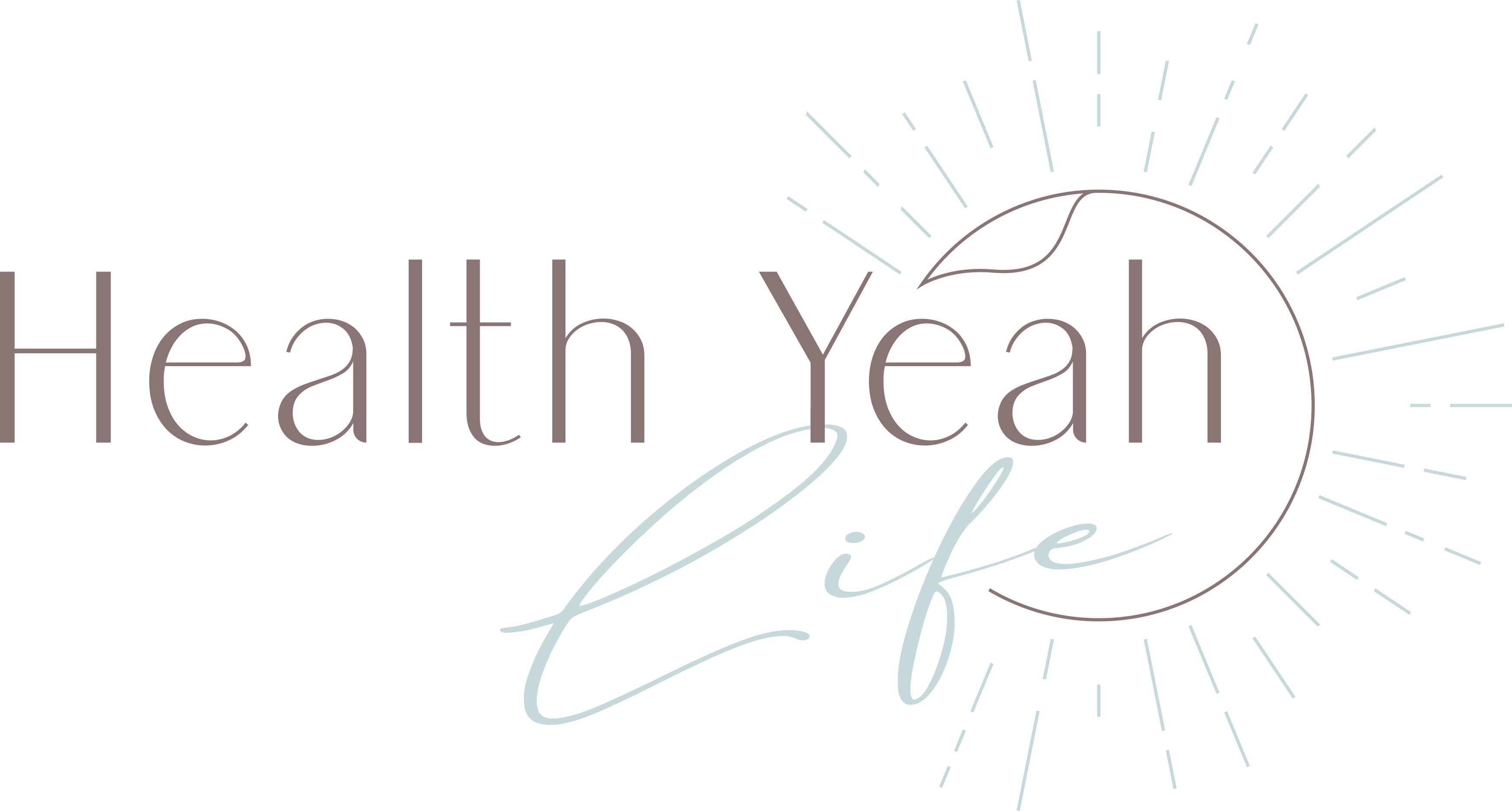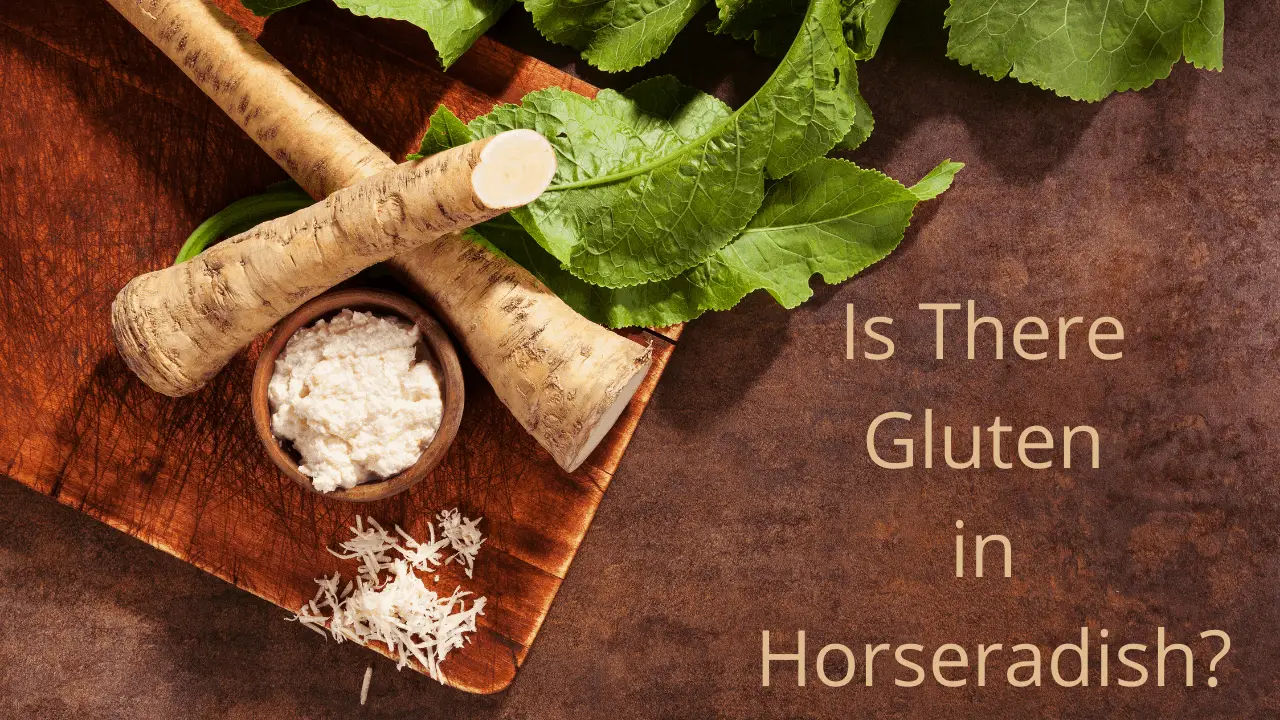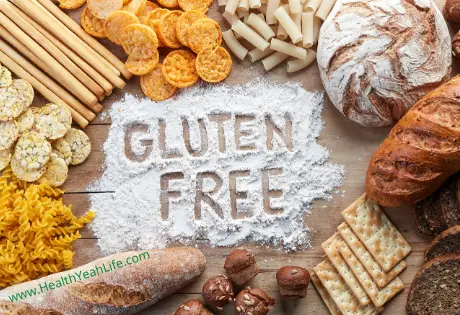This zingy vegetable packs a punch in your mouth with every bite. Another significant benefit is that you can buy it any time of the year in the US. So, you won't have to restrict yourself to preserved versions, unlike other foods.
An average person may consider it essential with its versatile uses in the kitchen, especially in European and Asian cuisine. Horseradish sauce makes an incredible condiment, too, whether it's for salads, meat, or deviled eggs.
Do any of these disrupt your newly adapted gluten-free diet? Let's find out!
What is Horseradish?
It's unlikely that you've never heard of this vegetable before. But, if you haven't, don't fret. Horseradish is a root vegetable from the Brassica family of cruciferous vegetables, including kale, broccoli, cabbage, wasabi, and mustard.

Cruciferous vegetables are those whose roots are mainly eaten, though the leaves are edible too. The peculiarly stingy odor and taste are due to allyl isothiocyanate or mustard oil. Horseradish is found in multiple options, such as raw horseradish, dried, and powdered.
That's as far as the vegetable itself goes. The more common usage of horseradish is prepared horseradish. As the name suggests, Prepared horseradish is grated horseradish root mixed with vinegar, salt, and sugar.
Horseradish sauce is usually creamy by making use of sour cream or mayonnaise. Horseradish condiments and sauces take away the stingy punch of the vegetable and reduce it to a mild flavor.
Therefore, prepared horseradish and horseradish condiments are comparatively more popular in the US.
Gluten & Horseradish
When considering the gluten content in horseradish, you'll need to consider the prepared version and sauce versions too. Let's start with the vegetable root; horseradish is natural food. Like all-natural foods, horseradish is gluten-free without any trace of gluten in the vegetable.
However, horseradish skin can come in contact with gluten particles during storage or transportation. The skin becomes victim to gluten cross-contamination, but that's about it. Therefore, if you're buying and consuming raw horseradish, it's best to wash it and peel off the skin.
Prepared horseradish is a controversial item when questioning gluten in it, although it contains simple product formulations. The recipe may look gluten-free; after all, it's just vinegar, salt, and sugar.

However, if the vinegar is distilled, that makes it tricky. Distilled vinegar from gluten grains is one of the most significant controversies in the gluten-free world. Some say the distillation process eliminates gluten chances, even if sourced from gluten grains.
Meanwhile, others say that only distilled vinegar of non-gluten grains is safe for gluten-free dieters, especially celiacs. Overall, if your symptoms aren't triggered after consuming distilled alcohol or vinegar, you are probably safe.
In this case, prepared horseradish should work with your diet without any worries. If it's the opposite, look for gluten-free prepared horseradish but again, one with non-distilled vinegar. A safer option is to make a homemade version. Plus, the only thing you'll need that isn't already in your pantry is horseradish root.
Is Horseradish Safe to eat on a Gluten-Free Diet?
On to the sauces, the traditional ones are a no-go for gluten-free dieters. Horseradish condiments are made using a combination of ingredients, including dairy. These ingredients may be contaminated with gluten if the product is not explicitly gluten-free.
The manufacturer may also include gluten-based additives to enhance texture, viscosity, shelf-life, etc. Not to mention, anything that comes out of a manufacturing facility comes with increased cross-contamination risks. As long as the brand does not ensure gluten-free manufacturing sites, you can never be sure enough.

Again, tiny traces of gluten can work for those who are shifting to a gluten-free diet for better health. This reasoning does not extend towards celiac and gluten-sensitive individuals. They need to buy only gluten-free products to remain safe from the side effects of gluten in their bodies.
Horseradish is sometimes also added to condiments like mustard for an extra flavor burst. Thus, you'll need to look into any ingredients in the condiment before purchasing it.
Are Wasabi and Horseradish Similar?
Many confuse wasabi and horseradish with being the same. Horseradish paste and wasabi paste smell and taste similar to a certain extent. So, it wouldn't be uncommon to take one for the other. Horseradish and wasabi do have different colors, though.
Horseradish paste is white, while wasabi is green. And they belong to the same Brassica plant, which makes them cousins. While the family is the same, the two vegetables are not. Let's not forget that they even release the same chemical, i.e., natural mustard oil, when cut into.
The difference lies in the fact that they're entirely different vegetables. Their consumed parts are not similar either; you eat the root of horseradish and the stem of wasabi. Wasabi, flavor-wise, is significantly more intense. It's still savory and spicy, like horseradish. But with pure wasabi paste, the flavors are in another dimension.
There is more demand than supply for pure wasabi since it mainly grows only in Japan. You're most likely eating horseradish paste mixed with green food coloring at your favorite sushi place. If you've never tasted authentic wasabi before, which you probably haven't, you won't notice any differences.

Arguably, you're not missing out on a lot with horseradish turned into ‘fake' wasabi, either. Then again, they're not similar. You may want to take a trip to Japan someday to taste the true essence of wasabi in its most accurate form.
Other Reasons For Symptoms After Eating Horseradish
Horseradish, with its spicy taste and flavor, is not ideal for increased consumption. It's why restaurants serve only a small serving on the side. For this reason, if you're eating it raw or making homemade prepared horseradish or condiments, use it sparingly.
The most common side effect of higher consumption is irritation. The pungent smell and taste can irritate the mouth, nose, and stomach. Moreover, stomach irritation can also cause issues in your digestive system.
These symptoms may correlate with symptoms of celiac and gluten intolerance. When gluten intolerant individuals eat horseradish and experience these symptoms, they may automatically link it to contaminated horseradish.
However, that's not always the case. Too much horseradish may itself be a problem, especially for those already suffering, due to underlying conditions. For those with celiac, gluten sensitivity, Inflammatory Bowel Disease, and stomach ulcers, too much horseradish can aggravate the symptoms.
Is it Good For Your Health?
The health benefits of horseradish, when eaten in small amounts each day, are exemplary. History has it that horseradish has been used for medicinal purposes by even the Greeks and Egyptians.
From urinary tract infections, kidney stones, and gallbladder disorders to sciatic pain, colic, rheumatism, and respiratory problems, horseradish has medicinal use for all these conditions. So, it's safe to say that horseradish is fantastic for your immune system. It keeps it healthy, fights off diseases, and aids in curing some of them.

Researches show significant benefits of horseradish for inflammation, cancer, and respiratory health. Even though you're not eating a lot of it, prepare to gain a boost of nutrients.
Where to Buy Horseradish?
If you're looking for horseradish to add to your diet, it's not hard finding it. You'll be able to find fresh horseradish root at almost any grocery store's fresh produce section. Those are, again, naturally gluten-free, so no extra trouble of looking for a gluten-free area or store. Just look out for the ones you're getting your hands on and ensure they're firm and not dry or shriveled.
Dried and powdered horseradish shouldn't be a problem either. They're made from all-natural horseradish without excessive processing. The real trouble starts when you opt for horseradish condiments, especially when you're the adventurous type. Horseradish condiments usually come in creamy versions.
Condiments like mustard and cocktail sauce may mention horseradish in the product's name. For these products, you'll need to be cautious and only buy good-quality items. Go for gluten-free horseradish condiments. The best horseradish choice is bubbies' products, Inglehoffer Cream Style Horseradish, Beaver Extra Hot Horseradish, etc.
Or keep it simple, and next time make your horseradish at home using good quality horseradish roots. This recipe's ingredients are simple and delicious.
Conclusion
To summarize, horseradish is a gluten-free food in its natural form. Excessive consumption of anything, like horseradish, is not recommended. Although, eating a gluten-free diet means you're strictly off-limits from gluten grains and their related products on this diet.

The only way you can ensure the diet works is when you follow it to the tee, and you should. Refrain from buying processed products that don't have a gluten-free label or certification. Remember, you're not restricted, but you have to see your meals from a different perspective while eating a gluten-free diet.
Final Words
Eating healthy is a lifestyle. We must make better choices and choose products that are high quality. Although, you may hear other health tips. I always say to read the product label and refrain from purchasing products that contain high fructose corn syrup, artificial flavor, sodium benzoate, artificial colors, calcium disodium EDTA, soybean oil, or any other artificial ingredients.
The owner of this website, HealthYeahLife.com is a participant in the Amazon Services LLC Associates Program, an affiliate advertising program designed to provide a means for sites to earn advertising fees by advertising and linking HealthYeahLife.com Review to Amazon properties including, but not limited to, amazon.com.






